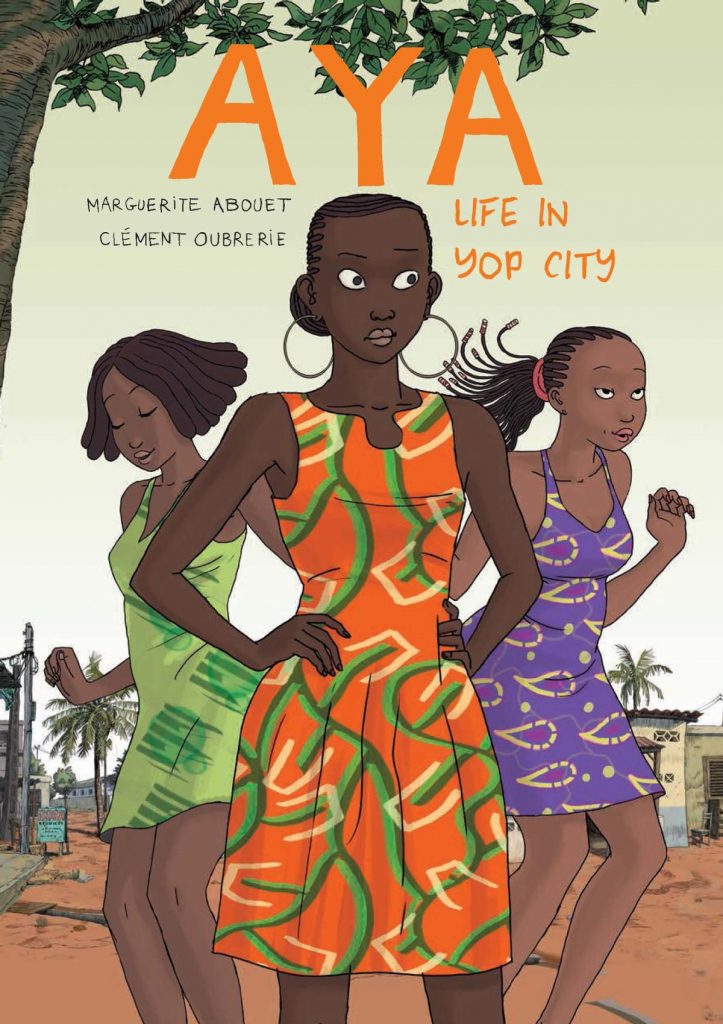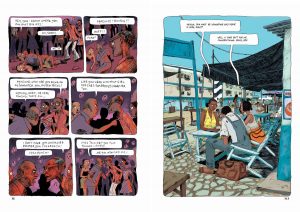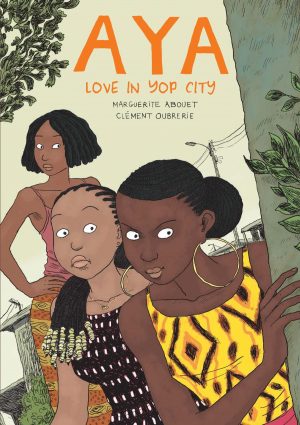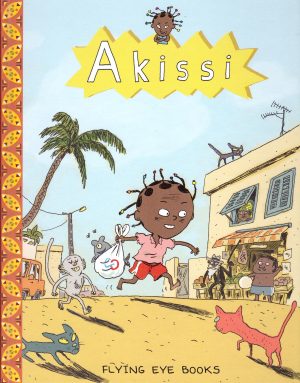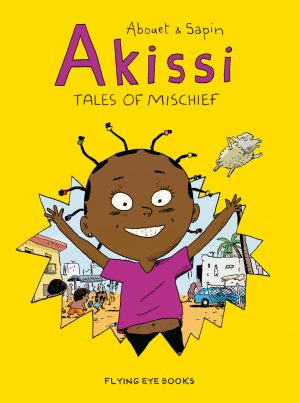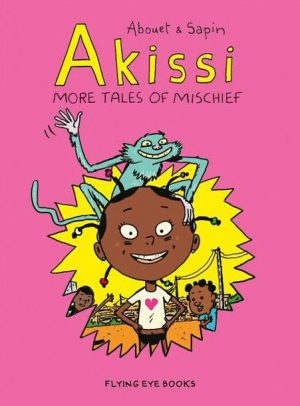Review by Frank Plowright
Life in Yop City concerns nineteen year old Aya, her friends and their families and the wider community of the Youpogon district of Ivory Coast’s capital Abidjan as the 1970s becomes the 1980s. We visit them for a period of about eighteen months over what was originally issued as three separate graphic novels: Aya, Aya of Yop City and The Secrets Come Out. Those books each provide around a hundred pages of story, but this combined version is the better buy for several reasons.
The most important is that it simply reads better in combined form. Marguerite Abouet plots her engaging drama as a complete story, and involves a wide cast, which leaves foreshadowing elements in the individual books sometimes left hanging. The simple Hervé is introduced midway through the opening episode, yet it takes until near the end of the story for his purpose to become clear. Likewise, what Aya’s father Ignace is up to is only revealed toward the end of the second episode. Presented as a complete story the events flow much more smoothly.
Despite Aya being the title character, she’s just one of an ensemble cast in what’s comedy drama, introduced via family portraits at the start. She’s the calm, smart and rational presence around whom all others revolve, a source of problem-solving sound advice, whether or not people want to take it. Most of the problems concern relationships, and Abouet supplies a depressing comment on Abidjan’s men of the times, only a couple of them in smaller roles coming across as entirely sympathetic. The remainder drop on a behavioural scale ranging from poor to wretched, and the example on the sample art is far from the worst. Some of these plots are another reason the combined Yop City is more enjoyable as the early episodes seem to chuckle at the appalling way the men behave, while they’re called to account by the end. However, Aya’s friends Adjoua and Bintou are no angels themselves, Adjoua more manipulative and Bintou more naive.
Clément Oubrerie’s art is deceptive. The simple drawings and flat colour disguise how accomplished he is at defining the way people are feeling, and he needs to be good at that given how the story rolls out. The right hand sample page shows another couple of strengths. It’s not the most dynamic of the several full pagers Life in Yop City provides, but it’s a very nicely composed portrait and showcases the additional talent of defining a location. That’s very efficiently provided as a fair amount of what we learn about people is drawn from their surroundings or their reactions to them, and there’s a sensitivity about the way Abouet defines people, to which Oubrerie is attuned.
Another reason Life in Yop City is a better package amounts to the bonus material. There’s a glossary of Ivorian terms, recipes, some social contextualising of a plot concerning a baby, an essay about the young Abouet arriving in France, diagrams explaining clothing, and an interview with Abouet about Africa. Don’t buy Life in Yop City for the bonus material, though, buy it for the first rate comedy drama. Abouet and Oubrerie produced three more albums in French, combined in English by Drawn & Quarterly as Love in Yop City.
